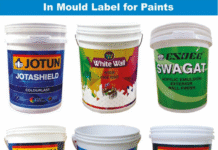IPPStar has been involved in three surveys including one with the Rochester Institute of Technology (RIT) that looked at the leading Indian offset printers’ awareness and use of
color management. A more recent survey by another organization vindicated IPPStar’s training activity and pointed out that amongst its respondents, only 17% use color management. This means that there is a huge opportunity for improvement in quality, print optimization, standardization and cost saving for printers that want to have a combination of excellence while saving time and cost.
I have hardly visited any printer in recent years who does not at least have an Epson inkjet proofer and many if not most seem to have a densitometer as well. But what are they doing with these? For my generation of color printers (we did not have the technology available today) it would be a no-brainer to use these printers for proofing, color matching and for print buyers to sign off on. However, when I recently spoke to a friend who sells inkjet proofers, he said that offset printers no longer believe in proofing since it is a cost centre.
The Indian print industry has always had its leaders who are ahead of the rest and who are keen to opt for color reproduction excellence. Often, they make it look like an art but what they practice is science — they print by numbers. Nevertheless, when I spoke to a quality printer who I have known for 30 years about the upcoming G7 Professional and Expert training in Mumbai (20 to 23 September), he said, “In a way customers have become more reasonable. They don’t come to the press for approval on press. They do not nit-pick or try to fine tune the details. They simply make sure that the brand colors are right and that the visuals are correct or pleasing overall.” This is an offset and digital printer who has best practices and color management using measurement. His press is actually quite standardized.
There is no denying the overall quality improvement in color print reproduction in India. Our newspapers are the largest members of the IFRA quality club outside Germany. This may be a reflection of the improvements in digital prepress technology including the use of computer to plate devices, better quality inks, paper and multicolor presses. I always give a lot of credit to the print buyers and especially the advertising agencies, that at least in the past, drove print quality.
On the packaging side, the brand owners and the packaging designers and purchasers should be driving quality optimization and in many cases they do. They should be keen to protect the brand and their packaging quality across regions, products across labels, cartons, flexible pouches, corrugated and even the signage and POP displays that their products are associated with.
Some of the leading global brands present in India are already doing this — they are moving away from the approval of LSD (light, standard and dark) shade cards to specifying print quality in numbers. They specify target colors in numbers and allow measurable tolerances in terms of Delta E — the difference between the target and the color that has been reproduced and measured by a spectrophotometer. Some global brands in India are insisting that you send sheets from the run for measurement to their quality assurance department or agency.
I have always pushed to the future and I believe that the industry has responded — the leaders have always been few but nowadays I find an increase in the number of new players who believe in quality and standardization and in leadership itself. When I am in fact pushing the Idealliance India G7 Training and Certification programme in Mumbai from 20 to 23 September 2016 to be conducted by Steve Smiley, a confident expert in offset, digital, flexo and gravure, I have to repeatedly answer the question raised by my printer friend. Actually there is no answer until the brand owners and print buyers wake up to the possibility of using G7 method for better color communication and standardization as a practical way of quality optimization and reducing print waste. This is sustainable — unlike ideas of cheapening the substrate and reverse auctions for lowering prices.
Remember that leading printers when they got FSC certification or improved MIS software did this because they knew it was the future and they wanted to be ready not because the brand owners and print buyers asked for these. They just invested in these because they wanted to be ready. Do you want to be ready for your customers? Why not save money even before they ask by training and certifying your color production technicians right here in Mumbai. Why not invest in your human capital before the next technical and social audit. But do it before the seats run out in Mumbai. There only a few seats left by the time you read this. Nevertheless make the effort and give me a call. – Naresh Khanna, editor@ippgroup.in











